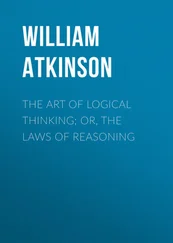Quackenbos says: “A formal Division is used more frequently in the sermon than in any other species of composition; but it has been questioned by many whether the laying down of heads, as it is called, does not lessen, rather than add to, the effect. The Archbishop of Cambray, in his Dialogues on Eloquence, strongly condemns it, observing that it is a modern invention, which took its rise only when metaphysics began to be introduced into preaching; that it renders a sermon stiff and destroys its unity; and is fatal to oratorical effect. It is urged on the other hand, however, that a formal division renders a sermon more clear by showing how all the parts hang on each other and tend to one and the same point, and thus makes it more impressive and instructive. The heads of a sermon, moreover, are of great assistance to the memory of the hearer; they enable him to keep pace with the progress of the discourse, and afford him resting places whence he can reflect on what has been said, and look forward to what is to follow.”
The best of the modern authorities seem to incline to the opinion that instead of employing a formal statement of the Division to be followed in the discourse, the speaker would better suggest the division and heads of his discourse in his Statement , not technically or formally, but incidentally—the suggestion being expressed by the order observed in the various points in the Statement. But this does not relieve the speaker from observing the rules of the Division in preparing his discourse, making his notes (if he uses this method), and of mentally arranging and classifying his subject. The following rules are approved by some of the best authorities:
I. Let the division between the various parts or sub-divisions be distinct —avoid the common error of including one sub-division in another.
II. Let the division be natural, and along the natural “lines of cleavage” or separation, rather than artificial classification.
III. Let each division or sub-division include and exhaust its entire subject-matter. Leave no “loose ends” or “unclassified residuum.”
IV. Let your divisions and sub-divisions be sufficiently general and large to avoid a tedious and unnecessary multiplication of heads.
V. Let the division follow the arrangement of first the simplest points , and then the more difficult ons arising from the former— always rising from the simple toward the complex or difficult.
Other rules bearing upon the question of Division will appear in connection with the subject of the Statement, which follows.
The Statement of an Argument is that step in the discourse in which the general and leading facts of the subject of discourse are presented briefly for the consideration of the hearer. There is quite a difference between the various authorities regarding the value of, and most effective method of presenting, the Statement. Some hold that the Statement should form a part of the Introduction, if not indeed superseding the latter; while others incline to the idea herein favored, i e., that it is advisable to first attract the attention of the hearers by a short Introduction, before proceeding to a formal presentation of the Statement.
Sheppard says: “It is unwise to weary the imagination of the hearer, because you are sure by that means to weary his muscles and sinews. It will weary his imagination to be told at the start what you propose to accomplish before you stop. It will weary him to tell him that after you have done so and so you will do so and so, and then so and so, and finally and in conclusion, so and so. Go on and do it. Say your say and be done with it. Never say: ‘Before I pass to the preliminary remarks, by way of preface to the introduction to the first head of my sixteen heads, I wish to remark, in the first place, that—but, by the way, before I pass to that, I wish to say that, etc.’” The same writer quotes approvingly the criticism that the late Moses Stuart preached a sermon in which he (1) “occupied a large part of an hour telling his audience what he was not going to preach about, of errors he was not going to combat; giving (2) a sketch of the heresies alluded to; (3) a few strokes designed to show how easily they could be demolished if he should take the time, and (4) the real instruction for unlearned hearers who cared nothing for exploded theories, was summed up in a few paragraphs.”
Hill says, in answer to the question, “Should the proposition or the proof come first!” “* * * If the proposition is familiar to the persons addressed, there will usually be some advantage in beginning with what is novel in the proof; for an old conclusion acquires fresh interest when regarded from a new point of view or approached by a new path. If the proposition, whether familiar or not to the persons addressed, is likely to awaken hostility, it should not be announced until steps have been taken to procure for it a favorable reception. Often the best course to this end is to begin by stating the question at issue without indicating the desired conclusion until some of the arguments on each side have been presented; or it may be wise to begin by securing assent to general principles from which the desired conclusion can be logically deduced. In pursuing either course, a reasoner seems to invite his readers or hearers to join him in an inquiry for the truth. This inquiry results, if he is successful, in convincing them of the justness of his conclusion by leading them to convince themselves; it results, if he is unsuccessful, in inducing them to give attention to evidence to which they would have turned a deaf ear had they known to what conclusion it led. In the absence of such considerations as these, the better course usually is first to state what is to be proved, and then to prove it!
The following general rules regarding the Statement are approved of by good authorities:
I. State your proposition in a clear, forcible and brief style. Clear, that the points may be easily understood; Forcible, that they make an impression on the minds of your hearers; Brief, that they may be easily remembered.
II. Adhere to the true facts of the case , and yet endeavor to emphasize and fix the attention of your hearers upon the features and points which are favorable to your contention, while keeping in the shadow of the attention those which are opposed thereto. Turn the “spotlight” upon your strong Points—this will not only illuminate them, but will tend to throw in the background the opposing ones.
III. If the proposition is complex or intricate, it will be well to avail yourself of the rules for Division, to some extent, and to briefly, concisely, and clearly analyze and divide the proposition in accordance therewith. In this case, care should be taken to follow the same arrangement, division and order in the succeeding steps of the argument, as otherwise there is a tendency to confuse the minds of your hearers.
IV. Adhere to the arrangement, division and grouping indicated by your Statement, when you come to the steps of Proof, Persuasion, or Appeal to Emotion. Many an otherwise good speaker impairs the efficiency of his work by making a logical statement of his argument, and then apparently ignoring it in his subsequent discourse. This practice, or malpractice, is akin to announcing a discourse on a certain subject, and then substituting another on an entirely different subject.
V. Let the statement of points of easy proof precede that of points more difficult. Let the statement of simple points precede that of more complex points.
VI. Regarding the statement of forthcoming arguments, observe the following arrangement: (1) Arguments of Cause and Effect; (2) Arguments of Analogy; (3) Arguments of Association. (See next chapter for this classification.) Some authorities vary the statement of this rule in favor of the following: (1) Causes; (2) Examples and Instances; (3) Indications and Signs. Remember that the form of the Statement must be followed in the course of the argument.
Читать дальше












